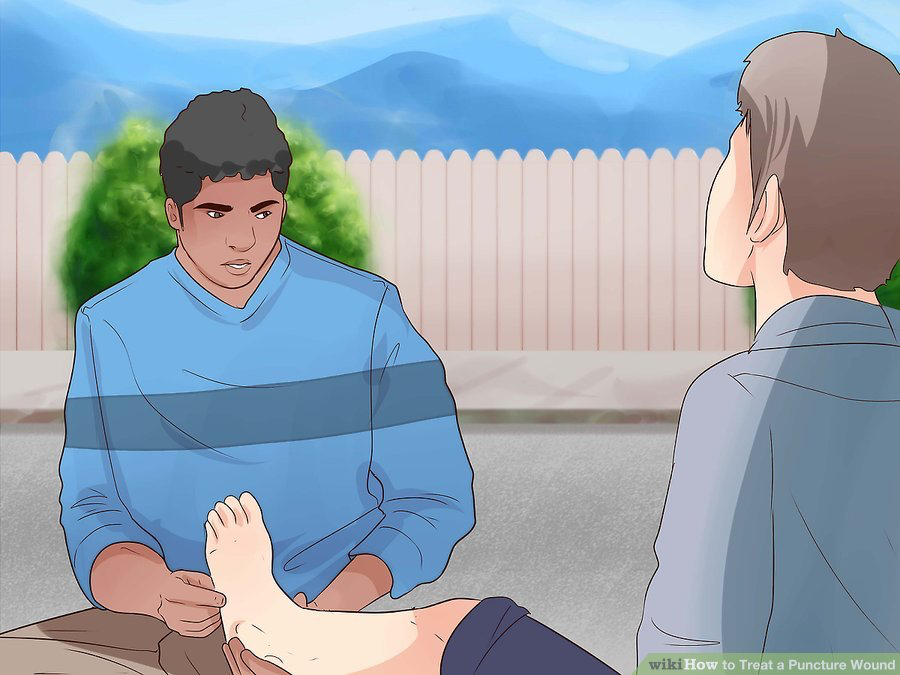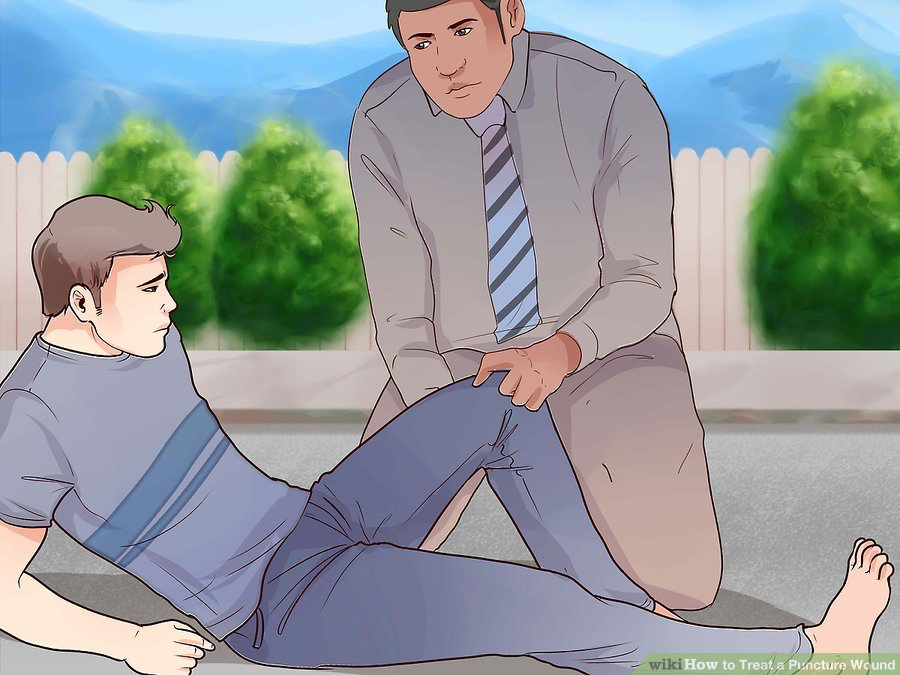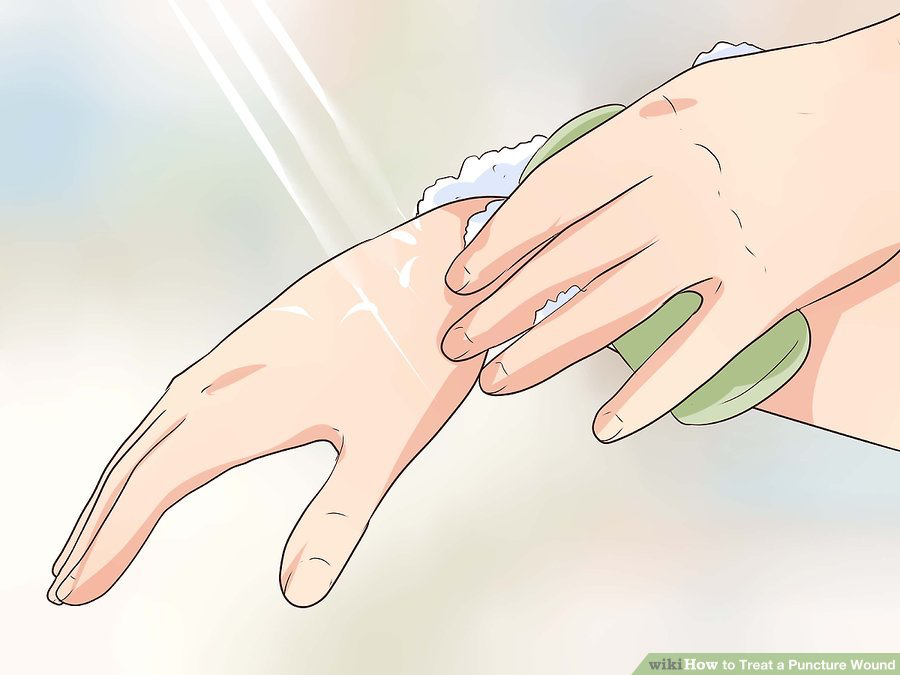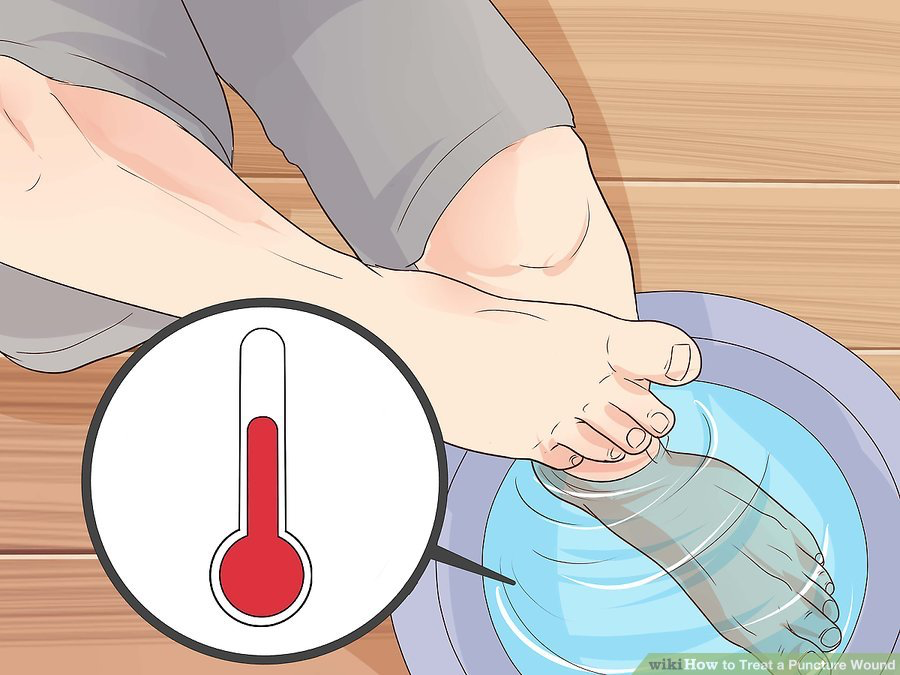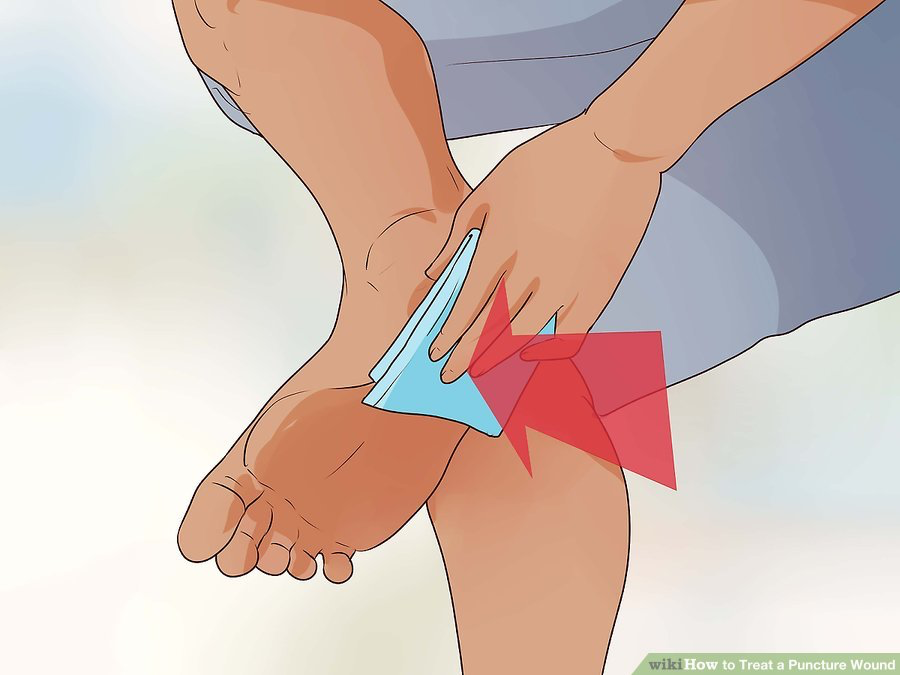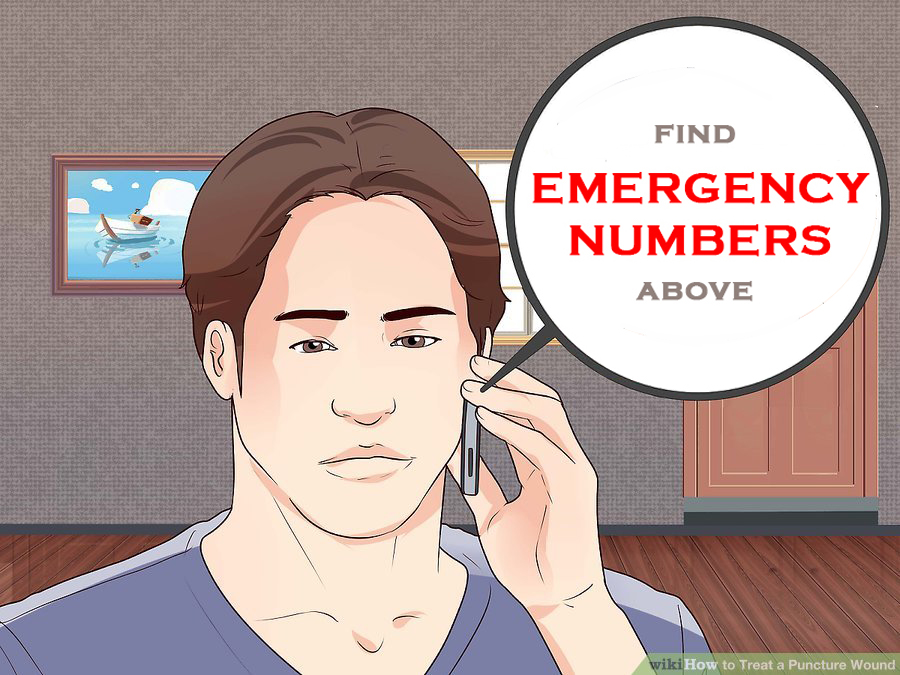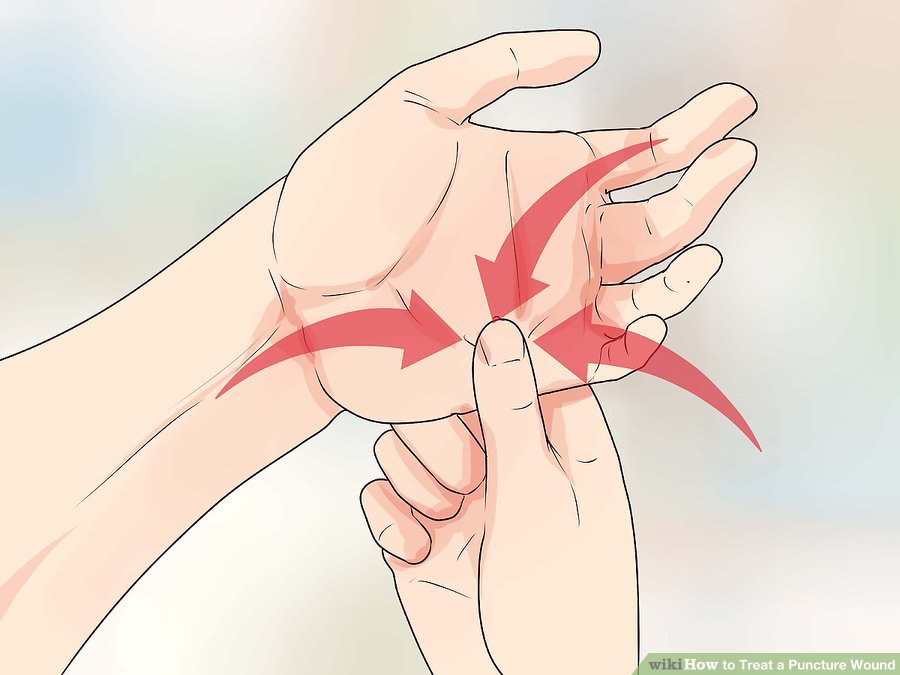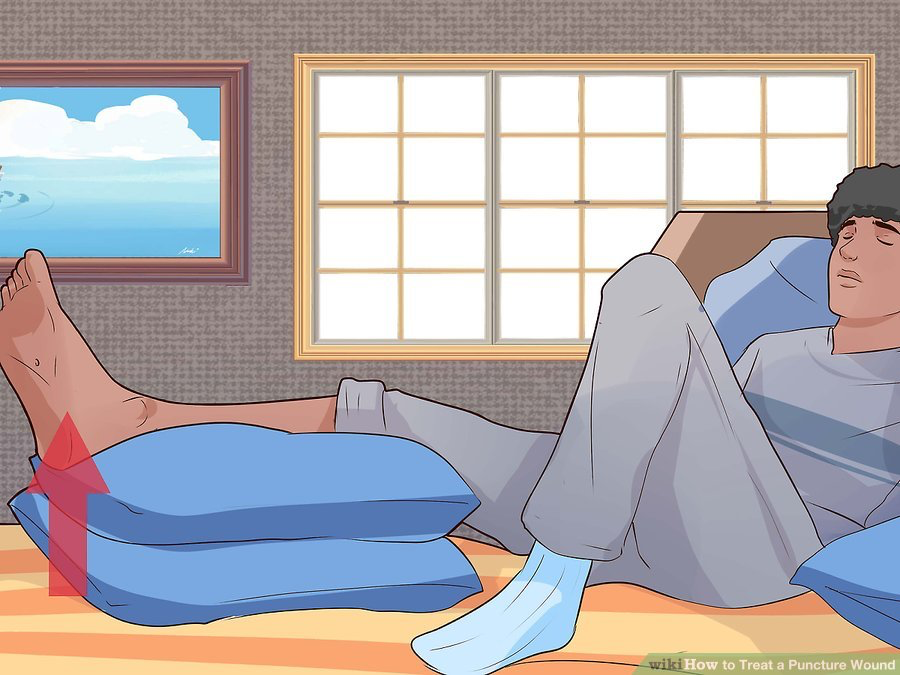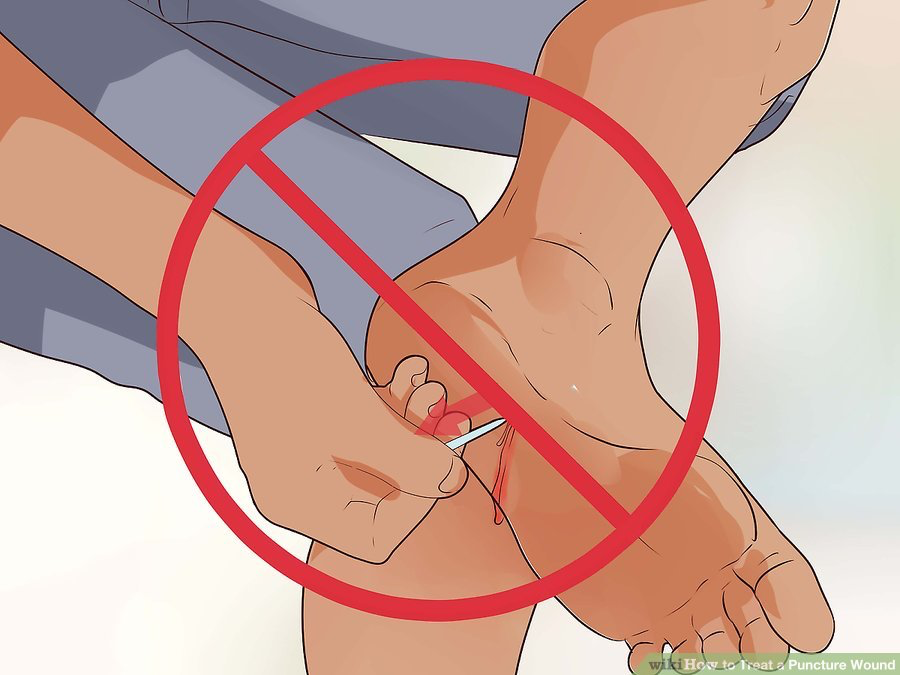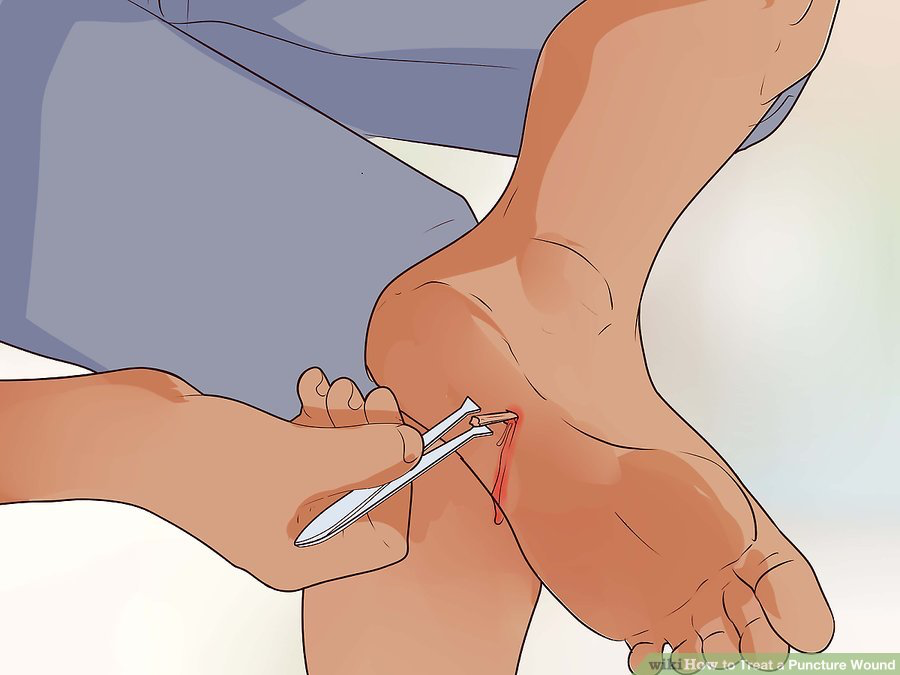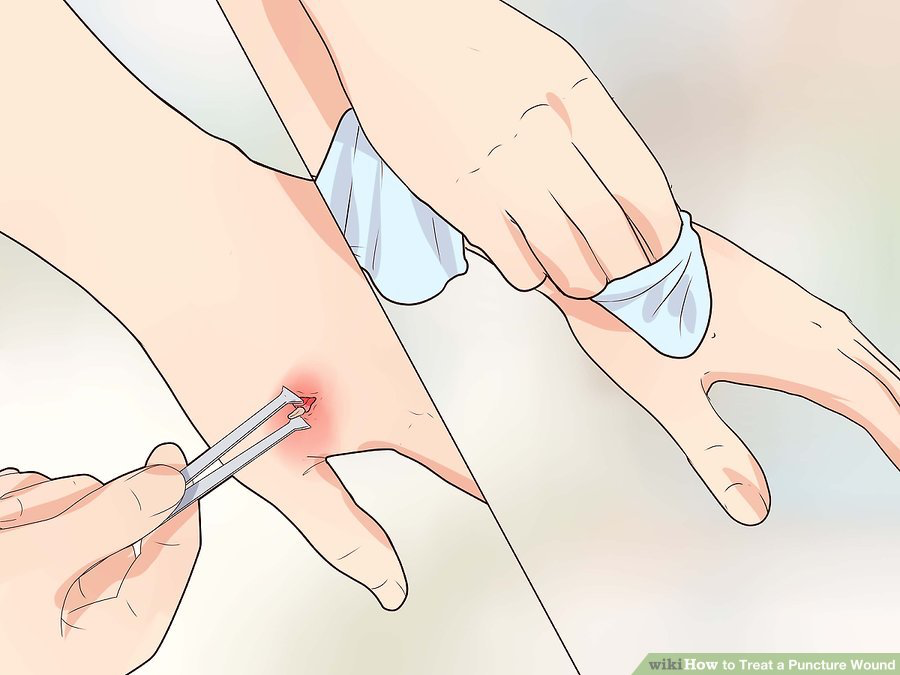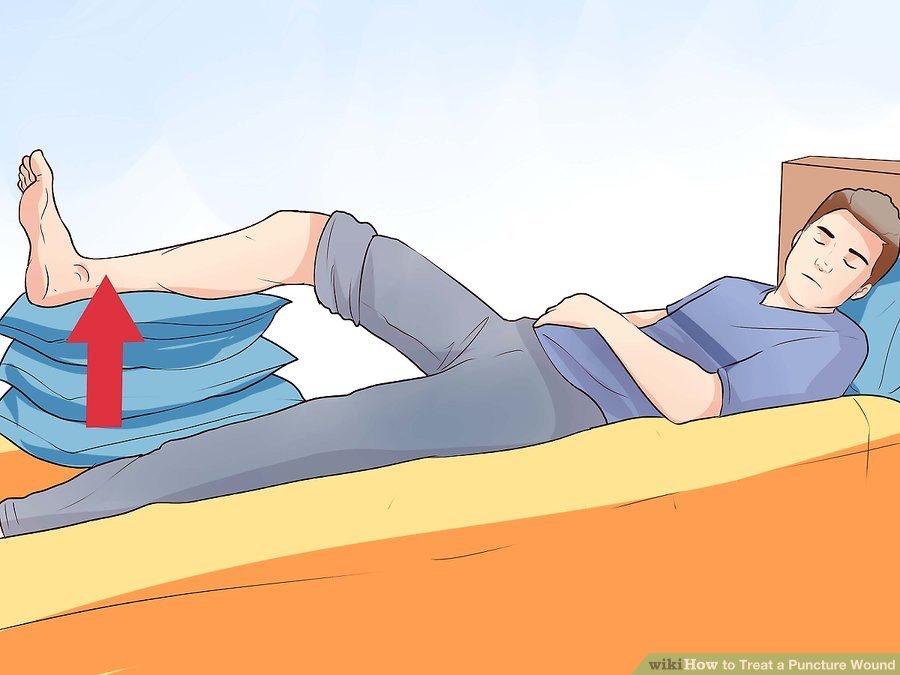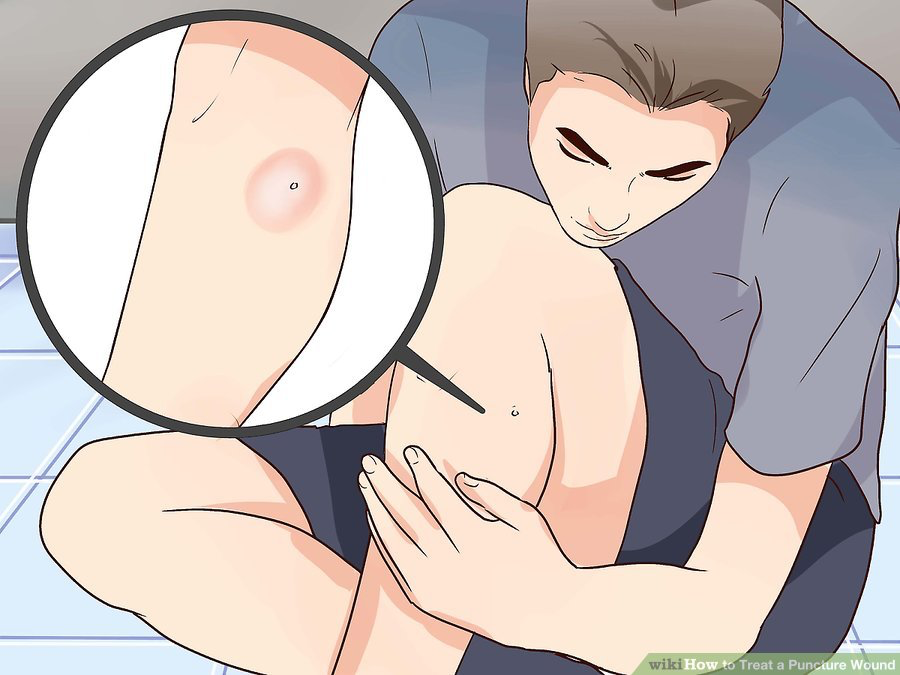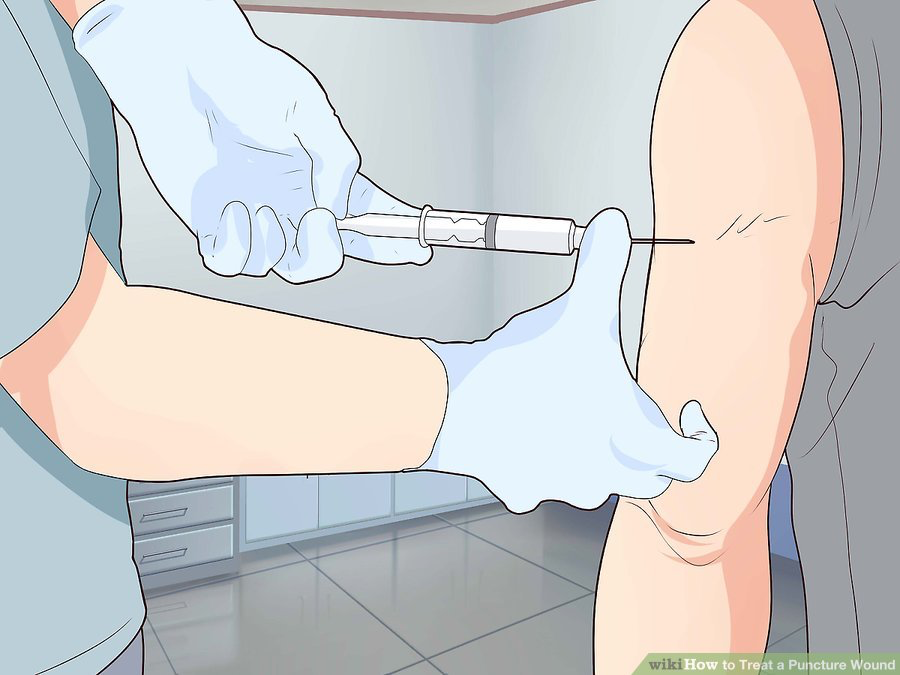Back First Aid Explained
How to Treat a Puncture Wound
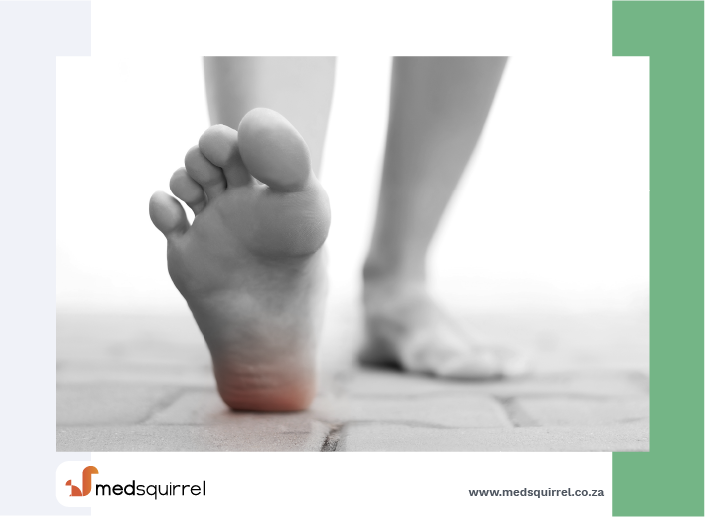
We have selected the following expert medical opinion based on its clarity, reliability and accuracy. Credits: Sourced from the website wikiHow. Please refer to your own medical practitioner for a final perspective, assessment or evaluation.
Overview
Did you know that puncture wounds account for five percent of the admission reasons for children going to emergency centers! Puncture wounds occur when a narrow, pointed object such as a nail, tack, sliver or other similar sharp object pierces the skin. These wounds tend to be narrow and can be quite deep if the object was driven into the skin with substantial force. Minor puncture wounds can be treated fairly easily at home, saving you a trip to the emergency room; major puncture wounds, on the other hand, should be treated as soon as possible by a medical professional. Read the following article to learn how to assess and treat minor and more serious puncture wounds.
Part 1: Assessing the Wound
1. Treat the wound immediately
Provided a puncture wound is attended to quickly, it will usually not become serious. If left unattended, however, infection introduced through the puncture site can become life-threatening for the patient.
2. Reassure the patient
This is especially important for children and for people who don't cope very well with pain. Have him sit or lay down, and help him to remain calm while you treat the wound.
3. Wash your hands with soap or an antibacterial solution
This will prevent infection.
- Clean any instruments you might use during treatment with rubbing alcohol. These may include tweezers.
4. Clean the wound with soap and warm water
Cleanse the wound under warm water for between five and 15 minutes, and then wash the wound with soap and a clean cloth.
5. Stop the bleeding
Minor puncture wounds usually do not bleed profusely. Use a clean cloth to apply gentle, direct pressure on the wound until the bleeding stops.
- A small amount of bleeding may actually help to clean the wound. You can allow small wounds to bleed for about five minutes.
- If the bleeding continues after several minutes of pressure, or the bleeding is severe, ongoing, or alarms you, seek medical attention immediately.
6. Assess the wound
Look at the size and depth of the wound, and check for foreign objects embedded in the skin. Larger puncture wounds may require stitches.
If you observe any of the following signs, call or visit an emergency medical facility as soon as possible:
- The bleeding won't stop after five to 10 minutes.
- The wound is a quarter of an inch or more deep. Even if you can stop the bleeding, larger wounds should be treated by a professional.
- An object is embedded deeply into the skin. If you can't see anything, but suspect an object remains in the wound, seek medical attention.
- The patient stepped on a nail, or the wound was caused by a rusty fishhook or other rusty object.
- A person or animal has bitten the patient. Bites are prone to infection.
- The affected area is numb or the patient cannot move the body part normally.
- The wound shows signs of infection, including redness and swelling around the affected area, increasing pain or a throbbing sensation, pus or other discharge, or the patient experiences chills or a fever (see Part 4).
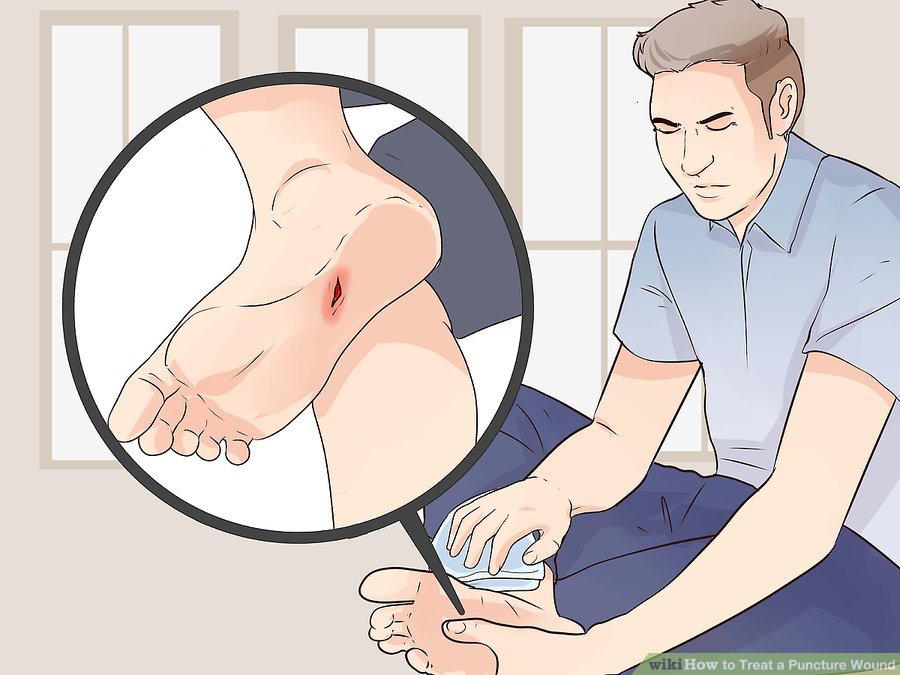
Part 2: Treating a Major Puncture Wound
1. Seek medical assistance immediately (see "EMERGENCY NUMBERS" above)
Call emergency services or a close-by emergency medical center. Major puncture wounds should only be treated by a medical professional.
2. Keep pressure on the wound
If the bleeding is severe and you do not have access to a clean cloth or bandage, use your hand.
3. Raise the affected body part
Keep the affected area raised above the patient's heart, if possible. This will help to bring the bleeding under control.
4. Do not remove objects embedded in the skin
Instead, apply a thick padding of bandages or clean cloth around the foreign object. Make sure there is as little pressure as possible on the embedded object.
5. Keep the patient in a resting position
To help slow the bleeding, the patient should be kept at total rest for at least 10 minutes.
6. Monitor the patient
While you wait for medical assistance to arrive, monitor the wound and the patient's condition.
- Keep pressure on the wound and replace bandages if they become soaked with blood.
- Calm the patient until medical assistance arrives.
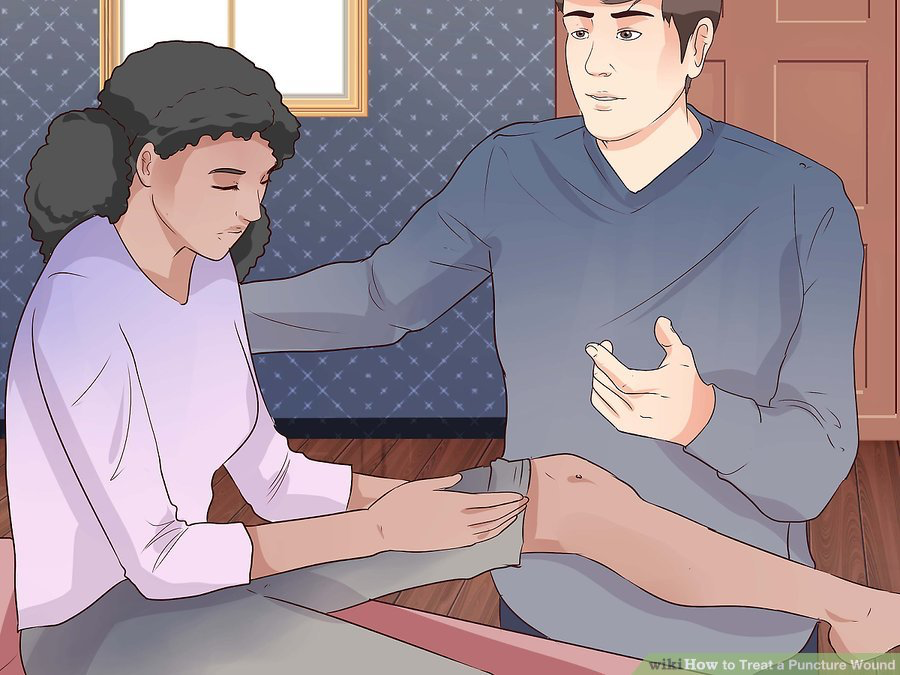
Part 3: Treating a Minor Puncture Wound
1. Remove the object (or objects) if it is not large
Small splinters and other sharp objects can be removed with disinfected tweezers. If you find a large object, or one that is embedded deeply into the flesh, seek medical attention.
2. Clean dirt and other small particles from the surface of the wound
Rub the wound with a clean cloth and/or remove the particles with disinfected tweezers.
- All manner of foreign objects can become embedded in a puncture wound, including wood, cloth, rubber, dirt and other materials; these may be difficult or impossible to see when treating the wound at home. However, do not poke or dig around in the wound; if you believe there are still foreign objects in the wound, seek medical attention.
3. Treat and bandage the wound
If the puncture is free of debris and sharp objects, apply an antibacterial ointment or cream and cover with a bandage.
- Because minor puncture wounds do not tend to be very large in size and are not prone to excessive bleeding, you may not need a bandage. However, puncture wounds to the feet or other places that get dirty may require a bandage to prevent debris from entering the wound.
- Topical antibiotic ointments like Neosporin and Polysporin are effective, and don't require a prescription. Apply every 12 hours for 2 days.
- Use a porous adhesive dressing or bandage that won?t stick to the wound. Change daily, to ensure that the wound stays healthy and dry.
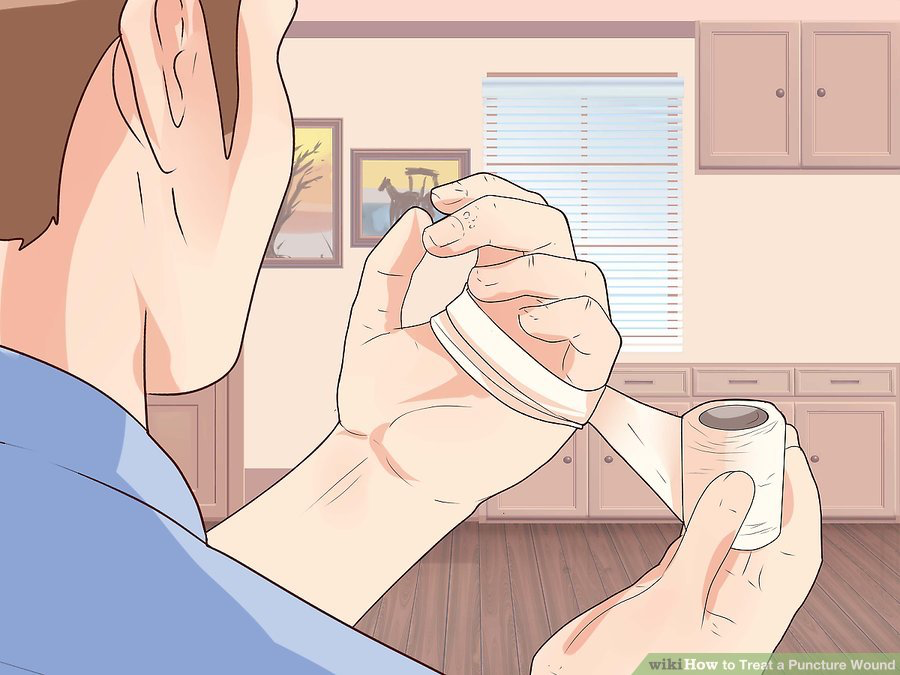
Part 4: Recovering from a Puncture Wound
1. Treat the affected area with care
The following steps are recommended for the first 48 to 72 hours after treating a minor puncture:
- Keep the affected area elevated, above the heart if possible.
- Change the bandages if they get dirty or wet.
- Keep the affected area dry for 24 to 48 hours.
- After 24 to 48 hours, clean the wound with soap and water twice a day. You can reapply antibiotic ointment or cream, but avoid the use of rubbing alcohol or hydrogen peroxide.
- Avoid activities that may place a strain on the affected area and could re-open the wound.
2. Monitor the puncture for infection
Minor puncture wounds should heal in less than two weeks.
If you notice any of the following symptoms, seek medical assistance immediately:
- Throbbing or increasing pain in the affected area.
- Redness or swelling of the wound. In particular, look for red streaks around or moving away from the wound.
- Pus or other discharge.
- An unpleasant smell coming from the wound.
- Chills, or a fever of 100.4 F (38 C).
- Swelling in the neck, armpits or groin glands.
3. Get a tetanus shot if needed
A wound that has come into contact with soil, manure or dirt may pose a risk of a tetanus infection. Use the following guidelines to determine if the patient needs a tetanus shot (and consult your doctor for advice):
- If more than 10 years have passed since the patient last had a tetanus shot.
- If the object causing the injury was dirty (or you are not sure whether or not it was dirty), or the wound is severe, and more than 5 years have passed since the patient last had a tetanus shot.
- The patient is not sure when the last shot was.
- The patient has never received a tetanus shot.
_______________________________________________________________________________________________________________________
Are you a healthcare practitioner who enjoys patient education, interaction and communication?
If so, we invite you to criticise, contribute to or help improve our content. We find that many practicing doctors who regularly communicate with patients develop novel and often highly effective ways to convey complex medical information in a simplified, accurate and compassionate manner.
MedSquirrel is a shared knowledge, collective intelligence digital platform developed to share medical expertise between doctors and patients. We support collaboration, as opposed to competition, between all members of the healthcare profession and are striving towards the provision of peer reviewed, accurate and simplified medical information to patients. Please share your unique communication style, experience and insights with a wider audience of patients, as well as your colleagues, by contributing to our digital platform.
Your contribution will be credited to you and your name, practice and field of interest will be made visible to the world. (Contact us via the orange feed-back button on the right).
Disclaimer:
MedSquirrel is a shared knowledge, collective intelligence digital platform developed to share medical knowledge between doctors and patients. If you are a healthcare practitioner, we invite you to criticise, contribute or help improve our content. We support collaboration among all members of the healthcare profession since we strive for the provision of world-class, peer-reviewed, accurate and transparent medical information.
MedSquirrel should not be used for diagnosis, treatment or prescription. Always refer any questions about diagnosis, treatment or prescription to your Doctor.

